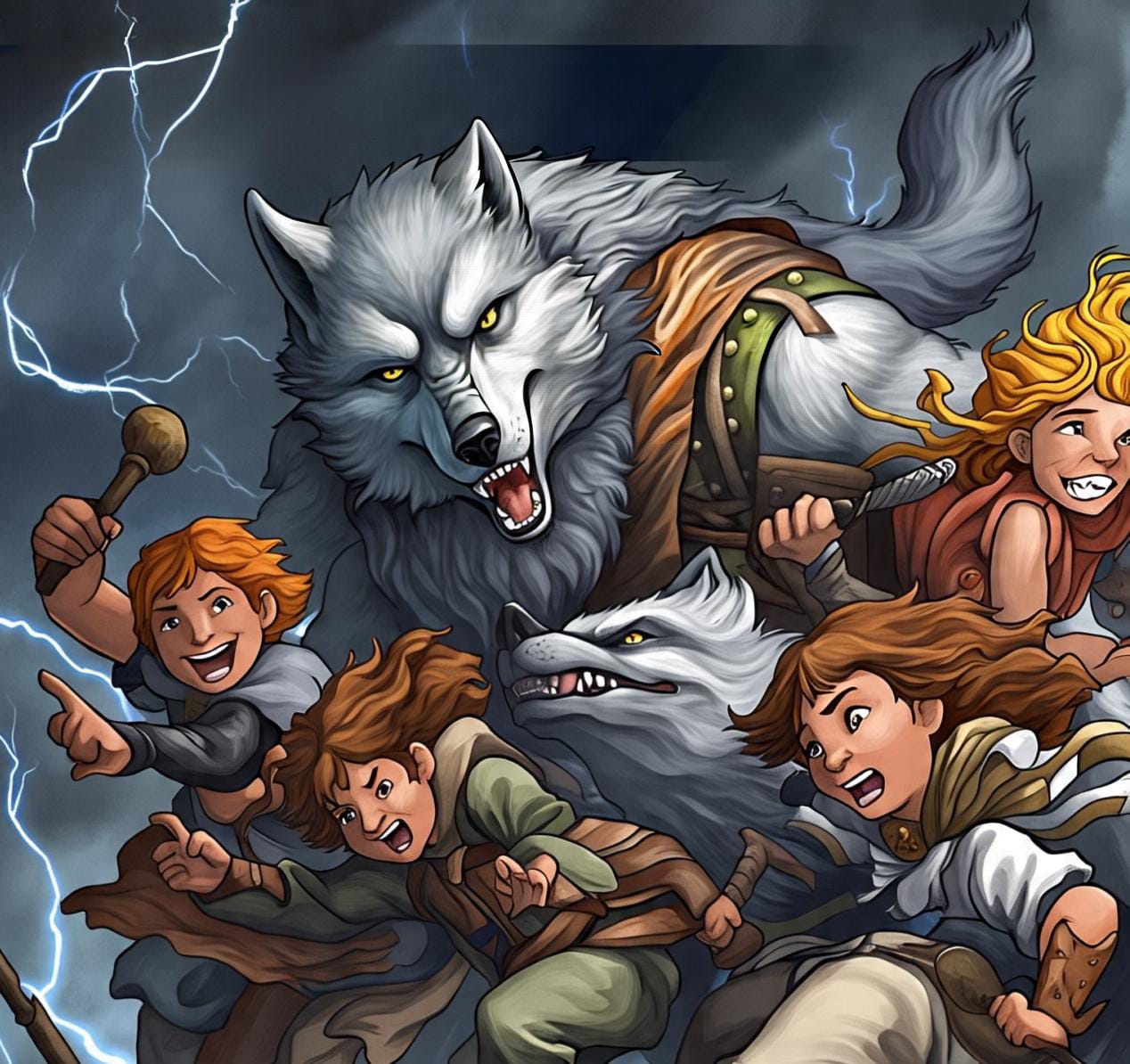Fenrir’s Kids: Heroes or Villains?

In the snowy lands of Norse mythology, many powerful beings walked the realms. There were gods like Odin and Thor, giants like the Jotuns, and then there were monsters—strange, magical creatures who held great power. Among the most feared of these monsters were the children of Fenrir, the giant wolf.
This is the tale of Fenrir’s terrifying offspring, and how the gods tried to stop the chaos they were meant to bring.
Who Was Fenrir?
Before we meet his children, let’s meet their father: Fenrir, the giant wolf.
Fenrir was no ordinary wolf. He was born to Loki, the trickster god, and a Jotun (giant) mother. Fenrir grew so fast and so strong that even the gods became scared of him. So they tricked him and chained him to a rock, where he waits even now for the final battle of the gods—Ragnarok.
But Fenrir wasn’t alone. He had children, and they were just as powerful—and just as dangerous.
The Offspring of Fenrir
Fenrir had two very unusual children:
- Jörmungandr, the Midgard Serpent
- Hel, the Queen of the Underworld
Some stories also mention Sköll and Hati, two giant wolves who chase the sun and moon across the sky, but the most well-known are Jörmungandr and Hel.
Jörmungandr – The Giant Sea Serpent
Jörmungandr was so long that he could wrap around the entire world! That’s why he was called the World Serpent. He lived in the deep ocean that circles Midgard (the world of humans).
The gods knew Jörmungandr was dangerous. He could grow forever, and it was said that one day, he would fight Thor, the thunder god.
To keep him far away, Odin threw Jörmungandr into the sea when he was still a baby serpent. But in the ocean, he kept growing and growing until his body wrapped all the way around the Earth—and he could bite his own tail!
Hel – The Queen of the Dead
Hel, Fenrir’s daughter, wasn’t like her brother. She wasn’t giant-sized or a snake—she was half alive and half dead. One side of her face looked like a beautiful young girl, and the other side looked like a skeleton.
Because of her spooky looks and her connection to death, Odin didn’t trust her either. So he sent her to the realm of the dead, called Niflheim, and made her the ruler of the underworld.
Hel didn’t complain. She ruled over the souls of people who didn’t die in battle. She built a throne, created her own palace, and became a powerful queen in her dark and quiet world.
Why Were the Gods So Worried?
The gods were afraid of Fenrir’s children because of a great prophecy.
The Norns (mystical beings who could see the future) warned that one day, Loki’s children would help destroy the gods during Ragnarok, the end of the world. Jörmungandr would fight Thor. Hel would rise with the dead. Fenrir would break free and battle Odin himself.
So, even though the gods didn’t like hurting children, they believed they had to bind or banish them to stop this terrible future.
Were They Really Evil?
This is the big question. Were Fenrir’s children truly evil—or just feared because of what they might do?
Some say Jörmungandr was only defending his home in the ocean. Some believe Hel was fair and kind to the souls in her care. Even Fenrir was tricked and bound because of fear—not because he attacked first.
Maybe the real problem wasn’t the children—but the fear of what they could become.
What Does This Story Teach Us?
Like many Norse tales, this one is full of mystery, magic, and meaning. Here are a few lessons it shares:
- Don’t judge someone just by their looks or their parents.
- Fear can lead people to make unfair choices.
- Even scary creatures can have kind hearts.
- Trying to stop the future might bring it closer.
Are They Still Out There?
In Norse mythology, it’s believed that Ragnarok hasn’t happened yet. So Fenrir waits, chained. Jörmungandr sleeps beneath the sea. Hel watches over her quiet kingdom.
Maybe one day they will rise again, not to destroy—but to change the world in ways no one expects.
So, next time you hear the wind howl or see waves crash on the shore, remember the children of Fenrir—the hidden powers beneath the surface of old stories.